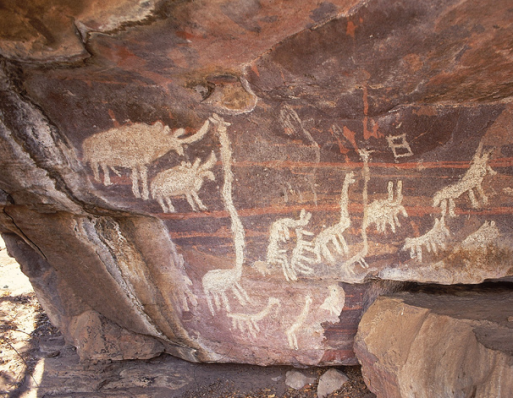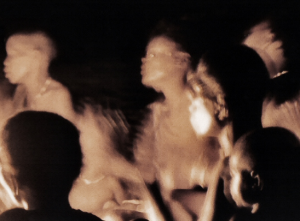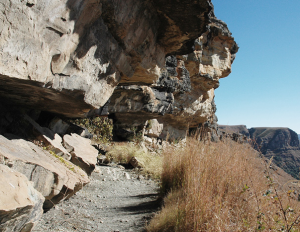The populations of the indigenous “Bushmen” of Southern Africa span across several countries, including South Africa, Zimbabwe, Lesotho, Mozambique, Botswana, Namibia and Angola. The different indigenous cultures have rich artistic and ritualistic traditions, many of which continue to play an integral role in their communities. The San people of Botswana, for example, continue to exemplify their relationship with death and dying through a traditional “trance dance.” This traditional dance of shaman healers is intended to open up entry into the realm of “half-death,” a space in which one can communicate with spirits in an out-of-body experience.
The trance dance is traditionally held on the periphery of a large campfire, with Bushmen stomping, singing and dancing in a circle for many hours.
The peak of the ritual is a moment of intense energy and communal rhythm, where the shamanic dancers enter a trance that grants them admission to the “half-death” realm of spirits.
“They attain ecstasy simply by means of their dancing,” states the Rock Art Institute (RARI), which has grown to understand the ritual through the artistic rock art paintings of the San people.
The shamans ultimately reach a point of extreme “concentration and hyperventilation,” explains RARI, “with the help of the women’s insistent, complexly rhythmic singing and clapping.” In half-death, these “shamans battle with malevolent spirits of the dead, who, [they often believe], come to the dance and try to shoot small, invisible, ‘arrows-of-sickness’ into people.”
“In half-death, these “shamans battle with malevolent spirits of the dead, who, [they often believe], come to the dance and try to shoot small, invisible, ‘arrows-of-sickness’ into people.””
Therein lies the role of the trance dance as a tool of healing and communication with the afterlife, which simultaneously helps to strengthen the community of the Bushmen through ritual.
Many trance dances are indeed held as curing dances, with a focused goal of improving the health of a member of the San community.
Artistic depictions of the San trance dance still exist in parts of Eastern Cape Drakensberg, exemplifying the energy and importance of the Southern African tradition. The rock art depicts various folkloric scenes and battles between therianthropes (part-human part-animal beings) and shamans—one shows a sea of spirits extending their talons towards a shaman fighting for the health of an earthly being.
“San art was much more than the communication of knowledge and esoteric insight,” says RARI, “Many of the paintings were storehouses of the supernatural potency that shamans harnessed for their cosmological journeys.” The San trance tradition showcases the power of community and cultural heritage in ancient and contemporary Southern Africa. It demonstrates a deep-rooted relationship between the Bushmen and death, while encouraging creative expression of their life-after-death beliefs — and it will certainly make you reconsider the power of dance.
Related Articles:
- Green Burial Makes its Way to South Africa
- Famadihana: The Malagasy Perspective on Death and Burial
- Death Rituals in Somalia

 African Bushmen and the Trance Dance
African Bushmen and the Trance Dance





 Our Annual Seven Holiday Gifts for Someone Who Is Grieving, 2024 Edition
Our Annual Seven Holiday Gifts for Someone Who Is Grieving, 2024 Edition
 “Making Mobiles” by Karolina Merska
“Making Mobiles” by Karolina Merska
 “Hands Up to the Sky” by Michael Franti & Spearhead
“Hands Up to the Sky” by Michael Franti & Spearhead















I am very interested in doing a paper on the San Busmen trance states and would love to be introduced to this writer. I can be reached at maddkc@aol.com and would also like to receive postings from this blog site.
Thank you, Kathryn Madden
Report this comment